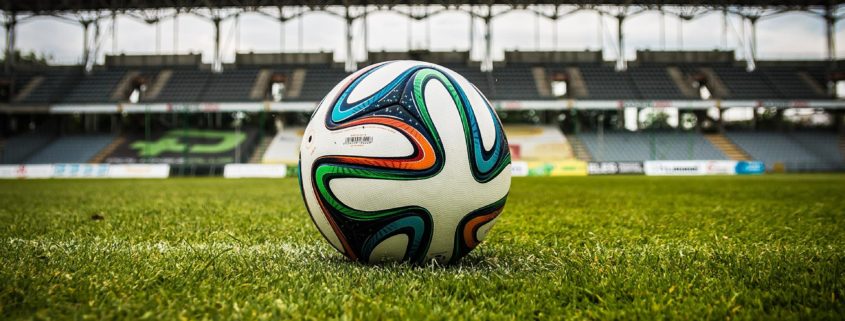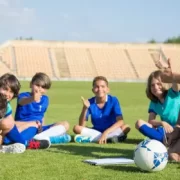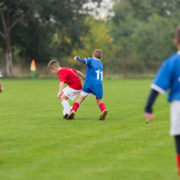What Size Soccer Ball is Best by Age? With Chart
Not many people know about it, but a soccer ball comes in various sizes. We all are used to seeing the popular size used in big leagues and tournaments, to the point we ignore the little children and their need for an appropriate soccer ball for optimal youth soccer training. Surprisingly, you will even see a soccer academy every now and then, that would be unaware of the sizes. Therefore, we share with you the details of soccer ball sizes by age.
Here is a chart that summarizes the sizes of soccer balls according to age:
| Age Range | Mass of Ball | Circumference of Ball |
| Ages 1 to 3 | Up to 205 grams | About 20 inches |
| Ages 3 to 5 | Up to 280 grams | About 22 inches |
| Ages 5 to 8 | Up to 320 grams | About 24 inches |
| Ages 8 to 12 | Up to 390 grams | About 26 inches |
| Ages 12 and above | Up to 450 grams | About 28 inches |
The Need for Sizes of Soccer Balls
Many people still think there is no need to get into such nuances about the size of a soccer ball. However, if you want your child to get into a place as big as the San Antonio youth soccer clubs, this is something you will have to give the utmost importance to. Here’s why:
The Right Size Complements Their Physique
In every soccer academy, the first focus always lies on kicking the ball. Not surprisingly, there only a certain amount of strike can a foot handle (to perform), and that includes the feet of kids too.
That being said, they have weak legs (generally) and smaller muscles, so their legs and feet cannot handle the weight of the standard soccer ball. Along with kicking, they might find it hard to perform other tasks like dribbling, and a smaller soccer ball will be of much help to them.
With a smaller ball, they will be able to practice their moves better, and would have a greater control on the ball, and balance over their movements. This progressive training could get them into any soccer academy in San Antonio.
They Master Their Game Early On
To understand this point, let’s consider a hypothetical scenario of 2 kids, one playing with the ball of adults, and one playing soccer with a ball of size that’s appropriate for their age. Each of them will become proficient in their respective domains, but the latter kid would have more control over the ball, and they will have more confidence in their game.
Moving on, as they grow bigger, stronger and taller, the former kid has to change size of ball and has to adapt as he or she grows. But on the other hand, the kid will have a ball appropriate to their age at all times, so they won’t have to adapt. In short, they’ll be a good player quite early.
Makes the Game More Enjoyable & Prevents Injuries
As mentioned above, it can be hard for a kid to maintain control over a soccer ball that’s too big for them. That results in them not being able to enjoy the game to its fullest, and lack of control also increases the chances of injury. In the long-run, it may contribute in them losing confidence in their game or losing the passion (or willpower) for it entirely.
Soccer Ball Sizes by Ages
Despite the summary given above, we still think it’s important to discuss the details of the different sizes of soccer balls. We will go in an ascending order in our discussion below:
Standard Size for Toddlers
Toddles can’t be a part of a standardizes soccer training, as they’ll love to simply kick around the ball. If their ball is of the right size, it puts them at a huge advantage. 200 to 205 grams would be the perfect mass for them, and they’ll become good kickers even before they can walk properly.
Standard Size for Ages 3 to 5
At the age 3 to 5, children have a more linear and controlled movement, but they still lack the cognitive skills and the muscular strength to handle a big ball.
Therefore, a soccer ball with slight increase from 20 to 22 inches of circumference, and a mass little above 250 would be appropriate for them. Not too little of a chance to be insignificant, nor too huge to be a leap.
Standard Size for Ages 5 to 8
Starting from the age of 5, their cognitive skills have developed enough for them to be professional concerning soccer and try to overcome others.
However, their physical capabilities still lack a great deal, and they’d be better off with a smaller increase, yet again. Nevertheless, they are almost there!
Standard Size for Ages 8 to 12
This is the average age where yous child will get into a football academy. That means the goal has been set in their mind, and they are prepared to work hard for it.
Most people would want to skip right to the typical soccer ball size from here onwards, but even here going for just the 4th biggest size will not be a bad idea.
Standard Size for Ages 12 & Above
The age of 12 is around where puberty starts for the boys, and there will not be a better time for them to confront the real deal.
They grow fast at this age, so it won’t be a problem for them to play with a 450-gram ball. In fact, it would be even better for their muscular growth and soccer physique.
Soccer Ball Sizes- Final Remarks
Getting the right size of the football for your child means they will pick up the pace and technique early on in their life.
Otherwise, most of their time would be spent adjusting their moves as they grow up, and that will only be a hindrance. Make sure the children play with a soccer ball of appropriate size.











